

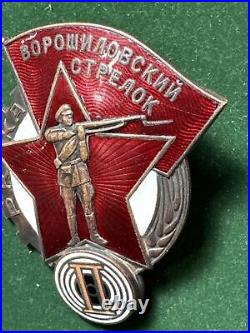



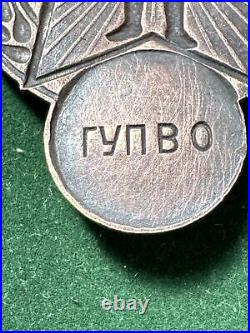


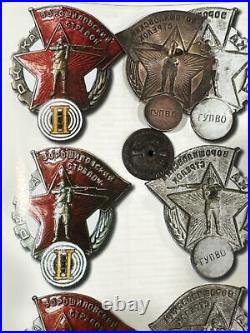











Early Soviet Red Army Badge. GUPVO is the Main Directorate of the border troops of the Red Army. RKKA -Red Army – Workers’ and Peasants’ Red Army.














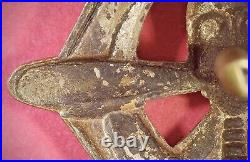





Thank you for looking! Badge for graduates of AVIAKHIM instructor courses. Height: 41.24 mm. Width (prop): 31.09 mm. Weight (w/ screw plate): 6.193 g. Weight w/o screw plate: 4.668 g. Screw length: 8.67 mm. Screw plate width: 16.25 mm. The Society of Friends of Aviation and Chemical. Defense and Industry of the USSR (AVIAKHIM) aimed to further promote the development of aviation, prepare the population for chemical defense and develop the chemical industry. During its existence, the society has issued more than a dozen different signs. It existed from March 1925 until January 23, 1927, when it merged with the Defense Assistance Society (OSO) and received the well -known name – OSOAVIAKHIM. Please note the enamel cracks on the upper right hand side. Many of these items tend to bend easily and the enamel flakes off. Another note is that I don’t think the screw plate is original to the piece (although I’m not sure as I couldn’t find a reference for one). It slides over the top of the worn threads barely catching as it goes along. Ultraviolet image included to show the lack of modern enamel repairs. Reach out to me with any and all questions you have. All sales are final. Condition and authentication are “as seen”.


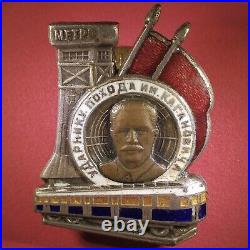



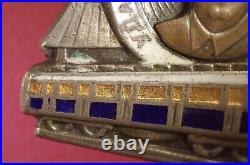






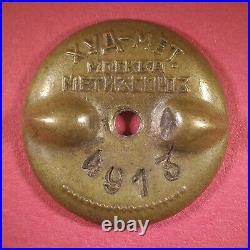





Soviet Badge “To The Shock Worker Of The Campaign Named After Kaganovich”. Material: steel, coper & silver plating. Workshop: Metallurgical artist Artel, Moscow. Height: 37.63 mm. Width: 26.98 mm. Weight w/ screwplate: 11.593 g. Weight w/o screwplate: 9.195 g. On September 18, 1934, the newspaper “Pravda”? . 258 (6144) reported that the commission of the Presidium of the Central Executive Committee of the USSR for the consideration and approval of breastplates approved the Metrostroy badge “Udarnik of the Kaganovich Campaign”. The image and conditions for obtaining the badge have been published. An indispensable condition for obtaining a badge is working without defects, systematically fulfilling the work plan day after day and passing the technical minimum. In case of violation of these obligations, the badge may be taken away by decision of the meeting of shock workers. There are no state privileges associated with receiving a badge. About 7,000 thousand badges were produced by the Metallurgical artist Artel of the Metallurgical Union. On September 21, 1934, the newspaper “Pravda”? . 261 (6147) wrote that in Sokol-National Park of Culture and Recreation named after. Bubnov, a 5,000-strong meeting of metro builders took place, dedicated to the October Campaign named after L. The best shock brigades of Kraevsky, Kholod, Yaremchuk, Ustinova and individual shock troops were given campaign badges. Kaganovich – only 35 pieces. 582 brigades, numbering 20,000 shock troops, took part in the campaign Izvestia newspaper, September 21, 1935, ? . Meetings of badge workers were held, where important construction issues were discussed Stories of metro builders. By February 1935, about 6,000 builders had been awarded badges Izvestia, February 9, 1935, ? . Minimum known number: 229, maximum known number: 6256 The number was placed on the nut. This is a beautifully designed and scarce badge. It boasts full enamel with visible age spots. There is moderate to light wear on the plating. The reverse shows excellent toning from age. While the threaded post is bent it appears to be full length with heavy wear on the machine threads. The screw plate is original to the piece and denotes this badge’s issue number of #4913. The screw plate is stamped with HUD-MET. / MOSCOW / METIZSOYUZ. The screw plate threads on without struggle and does not have excess play when on the post. Ultraviolet image included to show lack of modern repairs to the enamel. Awards of the USSR for labor and social activities #238. Award badges of heroes and shock workers of labor #3.76. Signs of law enforcement agencies of the USSR #2.3.30. Soviet Badges, Volume 2: Law Enforcement Agencies, by Igor Sysolyatin, C 2020. Reach out to me with any and all questions you have. All sales are final. Condition and authentication are “as seen”.







Soviet Union SILVER coin. 1 x 1924 Russian USSR Soviet Silver 1 Poltinnik Coin 9 Gram.




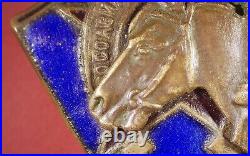




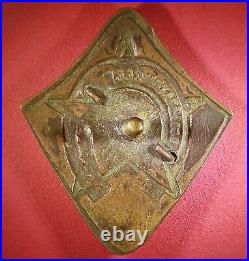



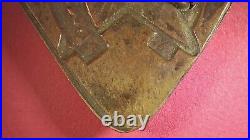



Height: 41.08 mm. Width: 35.28 mm. Weight (w/ screw plate): 13.785 g. Weight w/o screw plate: 8.489 g. Screw length: 11.5 mm. The recipient of the sign had to pass initial cavalry training in society circles, as well as have skills in raising, caring for and training horses both for use in agriculture and for the Red Army. Reach out to me with any and all questions you have. All sales are final. Condition and authentication are “as seen”.







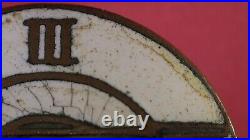



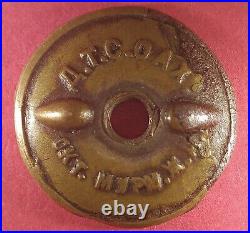




Those who fulfilled a certain standard were assigned the appropriate shooting category and awarded this badge.






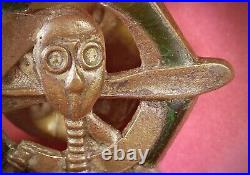





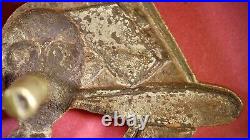







Badge for graduates of AVIAKHIM instructor courses. During its existence, the society has issued more than a dozen different signs.


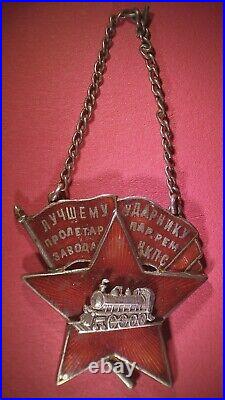

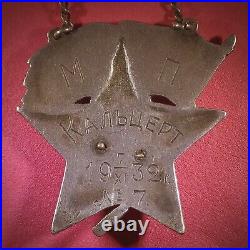


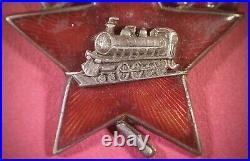



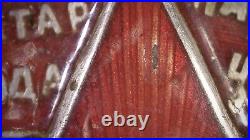




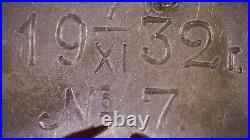

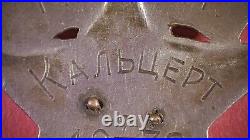








By Order of the Ministry of Railways No. “???????????????????????????????????????????????????????? “. The shape of the sign is a windswept banner with a large red Star in the foreground with a superimposed steam locomotive.






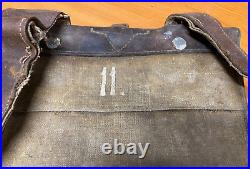


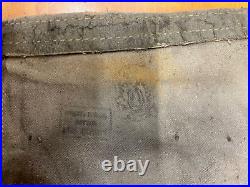

















Very rare, 1936 model. Early type, with kersey. Later models was made from canvas top. After Winter war Soviet authorities issued simpler and less heavyrucksack and these were stopped to manufacture.







Russian Soviet Leningrad Hunting Society White Metal Badge 1930s RARE. Size of the badge – 18 x 26 mm.



































































































































































